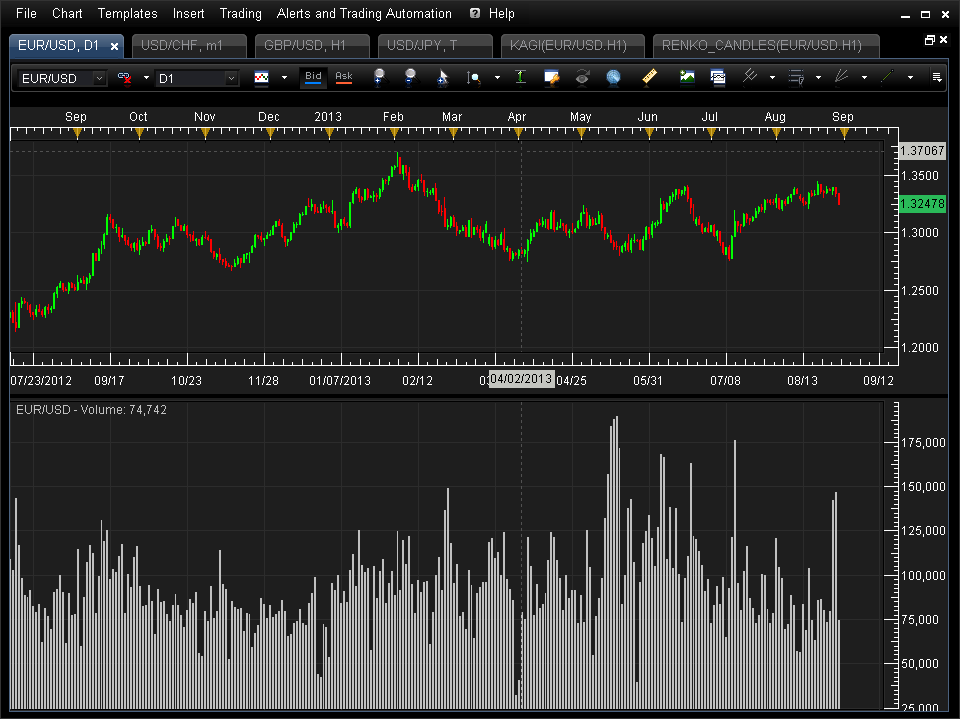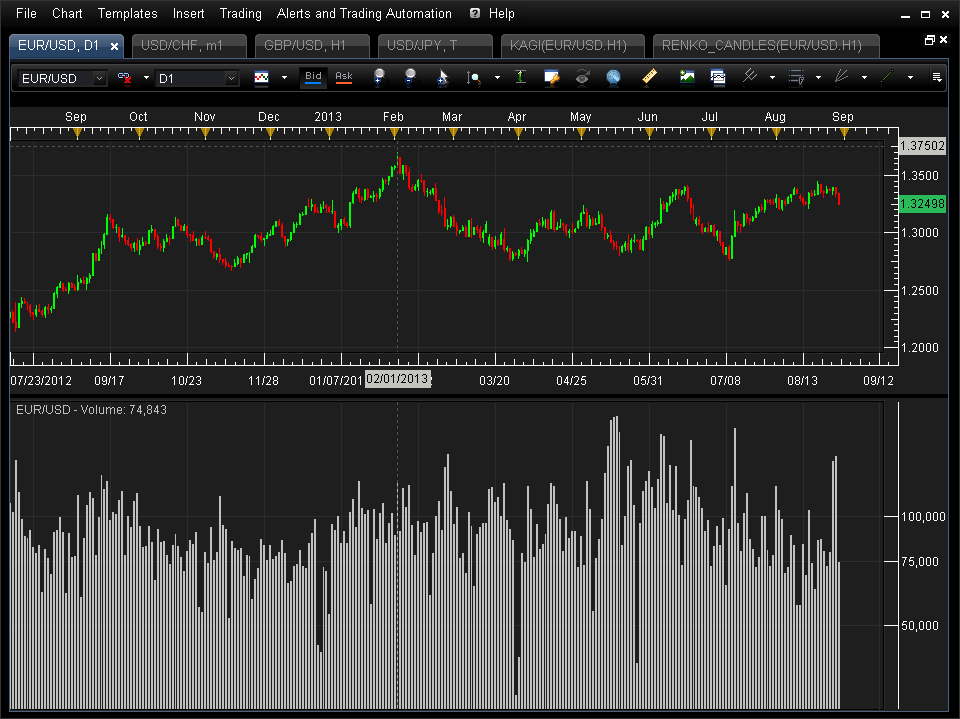
Switch between Linear and Logarithmic Scales
Brief
This section describes how to use linear and logarithmic scales.
Details
The vertical axis of a chart may be represented by a linear or logarithmic scale. In Marketscope 2.0, a linear scale is used by default.
On a linear scale, the spaces between value marks are always same, as it is on a ruler. For example, look at the tick volume chart with a linear scale:

On the chart, the volume increment is 10,000. Thus, the numbers on the scale are 0, 10,000, 20,000, 30,000, etc.
Linear scales are used when the data changes are insignificant.
On a logarithmic scale, the spaces between value marks are same for common percent volume increments. For example, look at the tick volume chart with a logarithmic scale:

On the chart, the space between 10 and 100 is same as the space between 100 and 1,000, as well as between 1,000 and 10,000 because all these scenarios represent a 1000% increase in volume. Thus, the numbers on the scale are 10, 100, 1,000, 10,000, etc.
Logarithmic scales are used when the data change is significant. On such charts, exploding data movements look more leveled, thus, easier to work with.
In Forex trading, a logarithmic scale is useful on the charts used for a long-term data analysis. Whereas, a linear scale is usually used on the charts with a short period when the data does not change that significantly.
To switch from a linear to logarithmic scale, right-click in the vertical axis of the chart, and then click Logarithmic scale. A selected check box
next to Logarithmic scale appears on the shortcut menu.

To switch from a logarithmic to linear scale, right-click in the vertical axis of the chart, and then, if the check box next to Logarithmic scale is selected,
clear it. The check box next to Logarithmic scale disappears.
